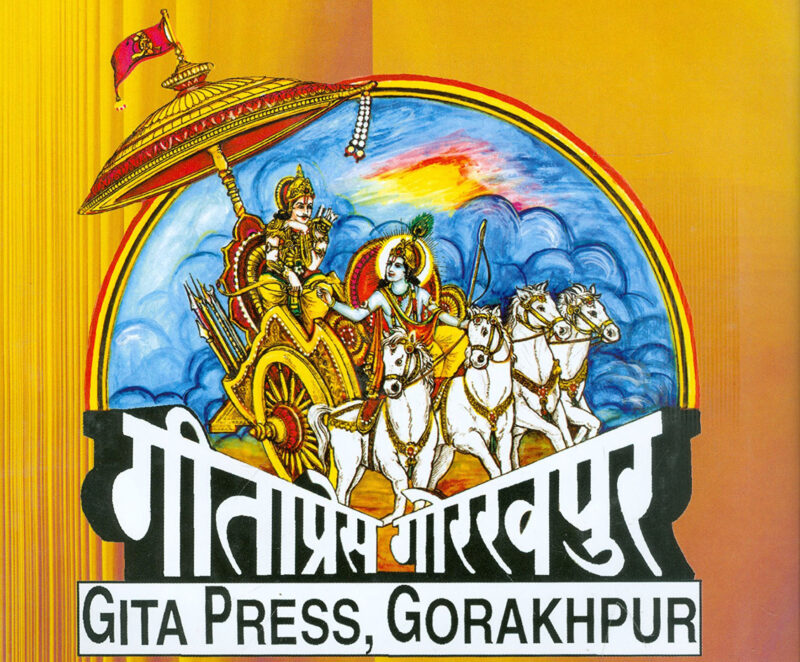“सेंधा नमक के साथ इन अंग्रेजो ने कैसे किया था खिलवाड़ “
भारत से कैसे गायब कर दिया गया… आप सोच रहे होंगे की ये सेंधा नमक बनता कैसे है ?? आइये आज हम आपको बताते है कि नमक मुख्यत: कितने प्रकार का होता है। एक होता है समुद्री नमक, दूसरा होता है सेंधा नमक “rock salt”सेंधा नमक बनता नहीं है पहले से ही बना बनाया है। पूरे उत्तर भारतीय उपमहाद्वीप में खनिज पत्थर के नमक को ‘सेंधा नमक’ या ‘सैन्धव नमक’, लाहोरी नमक आदि आदि नाम से जाना जाता है जिसका मतलब है ‘सिंध या सिन्धु के इलाक़े से आया हुआ’। वहाँ नमक के बड़े बड़े पहाड़ है सुरंगे है । वहाँ से ये नमक आता है। मोटे मोटे टुकड़ो मे होता है आजकल पीसा हुआ भी आने लगा है यह ह्रदय के लिये उत्तम, दीपन और पाचन मे मदद रूप, त्रिदोष शामक, शीतवीर्य अर्थात ठंडी तासीर वाला, पचने मे हल्का है । इससे पाचक रस बढ़ते हैं। अतः: आप ये समुद्री नमक के चक्कर से बाहर निकले। काला नमक ,सेंधा नमक प्रयोग करे, क्यूंकि ये प्रकृति का बनाया है, भारत मे 1930 से पहले कोई भी समुद्री नमक नहीं खाता था विदेशी कंपनीयां भारत में नमक के व्यापार मे आज़ादी के पहले से उतरी हुई है , उनके कहने पर ही भारत के अँग्रेजी प्रशासन द्वारा भारत की भोली भाली जनता को आयोडिन मिलाकर समुद्री नमक खिलाया जा रहा है, हुआ ये कि जब ग्लोबलाईसेशन के बाद बहुत सी विदेशी कंपनियों अन्नपूर्णा,कैप्टन कुक ने नमक बेचना शुरू किया तब ये सारा खेल शुरू हुआ ! अब समझिए खेल क्या था ?? खेल ये था कि विदेशी कंपनियो को नमक बेचना है और बहुत मोटा लाभ कमाना है और लूट मचानी है तो पूरे भारत में एक नई बात फैलाई गई कि आयोडीन युक्त नामक खाओ , आयोडीन युक्त नमक खाओ ! आप सबको आयोडीन की कमी हो गई है। ये सेहत के लिए बहुत अच्छा है आदि आदि बातें पूरे देश में प्रायोजित ढंग से फैलाई गई । और जो नमक किसी जमाने में 2 से 3 रूपये किलो में बिकता था । उसकी जगह आयोडीन नमक के नाम पर सीधा भाव पहुँच गया 8 रूपये प्रति किलो और आज तो 20 रूपये को भी पार कर गया है।
दुनिया के 56 देशों ने अतिरिक्त आयोडीन युक्त नमक 40 साल पहले बैन कर दिया अमेरिका में नहीं है जर्मनी मे नहीं है फ्रांस में नहीं ,डेन्मार्क में नहीं , डेन्मार्क की सरकार ने 1956 में आयोडीन युक्त नमक बैन कर दिया क्यों ?? उनकी सरकार ने कहा हमने आयोडीन युक्त नमक खिलाया !(1940 से 1956 तक ) अधिकांश लोग नपुंसक हो गए ! जनसंख्या इतनी कम हो गई कि देश के खत्म होने का खतरा हो गया ! उनके वैज्ञानिकों ने कहा कि आयोडीन युक्त नमक बंद करवाओ तो उन्होने बैन लगाया। और शुरू के दिनों में जब हमारे देश में ये आयोडीन का खेल शुरू हुआ इस देश के बेशर्म नेताओं ने कानून बना दिया कि बिना आयोडीन युक्त नमक भारत में बिक नहीं सकता । वो कुछ समय पूर्व किसी ने कोर्ट में मुकदमा दाखिल किया और ये बैन हटाया गया।
आज से कुछ वर्ष पहले कोई भी समुद्री नमक नहीं खाता था सब सेंधा नमक ही खाते थे ।
सेंधा नमक के फ़ायदे:- सेंधा नमक के उपयोग से रक्तचाप और बहुत ही गंभीर बीमारियों पर नियन्त्रण रहता है क्योंकि ये अम्लीय नहीं ये क्षारीय है (alkaline) क्षारीय चीज जब अमल मे मिलती है तो वो न्यूटल हो जाता है और रक्त अमलता खत्म होते ही शरीर के 48 रोग ठीक हो जाते हैं, ये नमक शरीर मे पूरी तरह से घुलनशील है । और सेंधा नमक की शुद्धता के कारण आप एक और बात से पहचान सकते हैं कि उपवास ,व्रत में सब सेंधा नमक ही खाते है। तो आप सोचिए जो समुद्री नमक आपके उपवास को अपवित्र कर सकता है वो आपके शरीर के लिए कैसे लाभकारी हो सकता है ??
सेंधा नमक शरीर में 97 पोषक तत्वों की कमी को पूरा करता है ! इन पोषक तत्वों की कमी ना पूरी होने के कारण ही लकवे (paralysis) का अटैक आने का सबसे बडा जोखिम होता है सेंधा नमक के बारे में आयुर्वेद में बोला गया है कि यह आपको इसलिये खाना चाहिए क्योंकि सेंधा नमक वात, पित्त और कफ को दूर करता है।
यह पाचन में सहायक होता है और साथ ही इसमें पोटैशियम और मैग्नीशियम पाया जाता है जो हृदय के लिए लाभकारी होता है। यही नहीं आयुर्वेदिक औषधियों में जैसे लवण भास्कर, पाचन चूर्ण आदि में भी प्रयोग किया जाता है।
समुद्री नमक के भयंकर नुकसान :- ये जो समुद्री नमक है आयुर्वेद के अनुसार ये तो अपने आप में ही बहुत खतरनाक है! क्योंकि कंपनियाँ इसमें अतिरिक्त आयोडीन डाल रही है। अब आयोडीन भी दो तरह का होता है एक तो भगवान का बनाया हुआ जो पहले से नमक में होता है । दूसरा होता है “industrial iodine” ये बहुत ही खतरनाक है। तो समुद्री नमक जो पहले से ही खतरनाक है उसमे कंपनिया अतिरिक्त industrial iodine डाल को पूरे देश को बेच रही है। जिससे बहुत सी गंभीर बीमरियां हम लोगों को आ रही है । ये नमक मानव द्वारा फ़ैक्टरियों में निर्मित है।
आम तौर से उपयोग मे लाये जाने वाले समुद्री नमक से उच्च रक्तचाप (high BP ) ,डाइबिटीज़, आदि गंभीर बीमारियो का भी कारण बनता है । इसका एक कारण ये है कि ये नमक अम्लीय (acidic) होता है । जिससे रक्त अम्लता बढ़ती है और रक्त अमलता बढ्ने से ये सब 48 रोग आते है । ये नमक पानी कभी पूरी तरह नहीं घुलता हीरे (diamond ) की तरह चमकता रहता है इसी प्रकार शरीर के अंदर जाकर भी नहीं घुलता और अंत इसी प्रकार किडनी से भी नहीं निकल पाता और पथरी का भी कारण बनता है ।
रिफाइण्ड नमक में 98% सोडियम क्लोराइड ही है शरीर इसे विजातीय पदार्थ के रुप में रखता है। यह शरीर में घुलता नही है। इस नमक में आयोडीन को बनाये रखने के लिए Tricalcium Phosphate, Magnesium Carbonate, Sodium Alumino Silicate जैसे रसायन मिलाये जाते हैं जो सीमेंट बनाने में भी इस्तेमाल होते है। विज्ञान के अनुसार यह रसायन शरीर में रक्त वाहिनियों को कड़ा बनाते हैं, जिससे ब्लाक्स बनने की संभावना और आक्सीजन जाने में परेशानी होती है। जोड़ो का दर्द और गठिया, प्रोस्टेट आदि होती है। आयोडीन नमक से पानी की जरुरत ज्यादा होती है, एक ग्राम नमक अपने से 23 गुना अधिक पानी खींचता है। यह पानी कोशिकाओं के पानी को कम करता है, इसी कारण हमें प्यास ज्यादा लगती है।
आप इस अतिरिक्त आयोडीन युक्त समुद्री नमक खाना छोड़िए और उसकी जगह सेंधा नमक खाइये !! सिर्फ आयोडीन के चक्कर में समुद्री नमक खाना समझदारी नहीं है, क्योंकि जैसा हमने ऊपर बताया आयोडीन हर नमक में होता है सेंधा नमक में भी आयोडीन होता है बस फर्क इतना है इस सेंधा नमक में प्रकृति के द्वारा बनाया आयोडीन होता है इसके इलावा आयोडीन हमें आलू, अरवी के साथ-साथ हरी सब्जियों से भी मिल जाता है।







